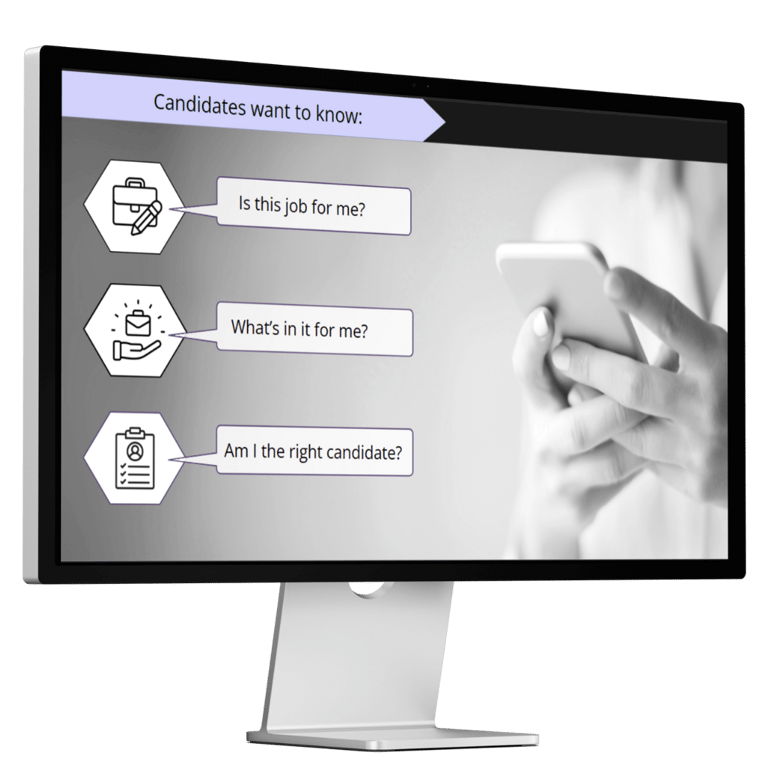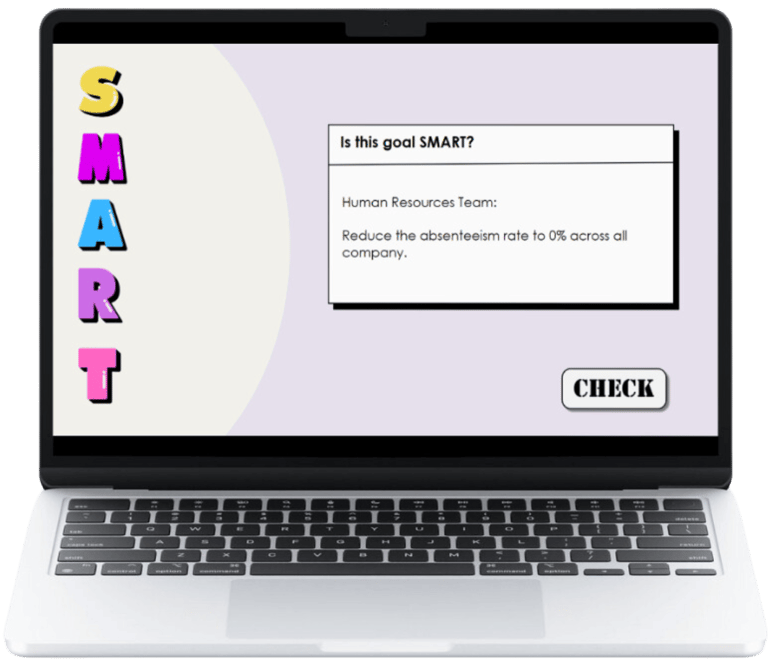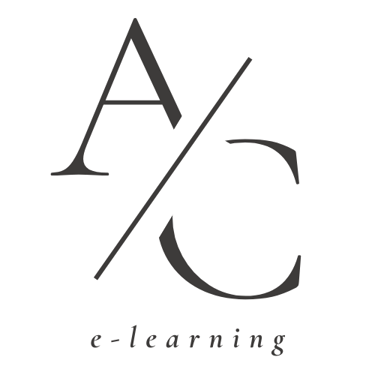Portfolio
Here are a few examples of challenges my training has addressed, along with details about the target audience, training methodology, and design decisions. In all projects, my role included liaising with subject matter experts, research, instructional design, content writing, storyboarding, e-learning design and development. For the courses I developed in-house, I also handled the communication and marketing activity for the training. You can preview the courses to get a firsthand experience.
Please note that these samples showcase selected parts of the courses, not the entire training. Some previews provide an overview of the course structure, while others illustrate the various approaches I use, interaction patterns, and different methods for engaging learners.
Active learning in the Magnetic Job Adverts course
Target audience:
Recruiters – all levels and settings (the content is applicable to in-house & agency staff)
Problem:
Job adverts not attracting enough ideal candidates – either there are lots of not suitably qualified or experienced applicants or few responses at all.
Solution:
A self-paced e-learning course highlighting the main aspects of the content and structure of job adverts that attract qualified candidates.
How it works:
The learners prepare to write compelling job adverts (or create effective prompts for the AI) by analysing candidate motivation and behaviour in job search. They engage in a number of hands-on activities that are structured in a way that activates their existent knowledge and helps to build gradually build on it. While some tasks have clear solutions, others, like in real-life, will depend on different variables that learners are prompted to consider.


Gamification, material staging, and personalised learning in the SMART Goals course
Goal setting is one of the most popular soft skill course requests, especially in e-learning and blended learning solutions. This course preview is a consolidation of examples taken from courses I developed for various audiences to show the different contexts it is applicable to.
Audience:
Professionals of all fields – anybody who wants to learn to set SMART goals.
Problem:
Professionals at different levels struggle to set clear, actionable goals that can be tracked and reviewed during their performance appraisals. Organisations need ways to ensure that employees’ personal goals support broader team and company initiatives.
Solution:
A self-paced e-learning course showing the SMART goals structure and highlighting the common pitfalls when setting goals.
How it works:
The course encompasses the aspects of personalisation – right at the start learners are given a task that concerns them and goal setting. They are actively involved throughout the course, being guided through the SMART framework, analysing and evaluating examples in a gamified, motivating setting. They finish the course applying the new material to their own situation.


Skill practice through gamificaiton and adaptive learning in the Negotiations course
Audience:
Sales and business professionals whose job involves negotiating
Problem:
Sales professionals new to negotiations are not familiar with the tactics of negotiations and tend to fall for the common traps in the process instead of navigating to the satisfactory outcome.
Solution:
A self-paced, practical course presenting a number of negotiating scenarios
How it works:
The part of the course presented in the preview is a game allowing learner to apply their knowledge about negotiations and evaluate the decisions presented to them. Game mechanics such as points, and dynamic difficulty adjustment increase engagement. The addition of game elements like power-ups: hints and tutorials available for the learners whenever they need support boosts their motivation. Learners can re-take the game if they run out of “lives” or would like to improve their score. The element of chance here helps to maintain interest as the game is not going to be replayed in the same order as before. Instant feedback keeps learners hooked and makes the learning process effortless and instantaneous.


Relatable storytelling and guided discovery approach in the Counter Offers e-Course
Target audience:
Junior agency recruiters in the tech and IT sector in the USA
Problem:
New recruiters suffered from a high rate of candidates withdrawing from the process just before closing the deal, sometimes having accepted the offer. This can damage relationships with clients and have an impact on the company’s income.
Solution:
A self-paced e-learning course introducing the concept of counteroffers and providing guidance on how and when to mitigate the risk of a counteroffer.
How it works:
Counteroffers are introduced through a humorous video that makes this pretty serious concept accessible to learners and gets them interested in the topic. An open-ended situation stimulates prior knowledge recall and encourages learners to stipulate about the reasons leading to the outcome they’ve seen. Elements of storytelling, including a cliffhanger between the two videos, hook the learners and motivate them to keep digging deeper. As the course is set in a context familiar to the learners and features real-life examples and practical tasks there is clear value of engaging with the content.


Looks like the kind of training you are looking for?
Get in touch, let me know what project you'd like to create and we'll put the wheels into motion.
